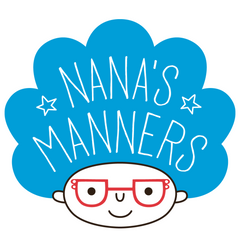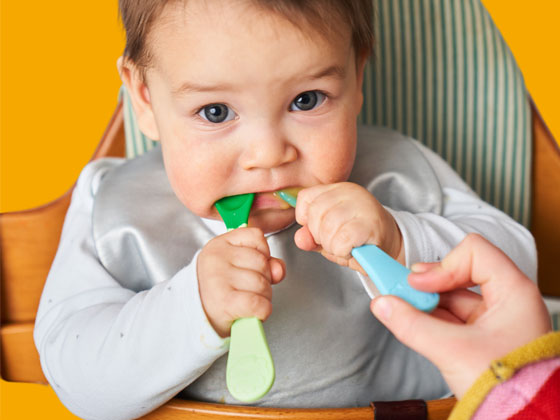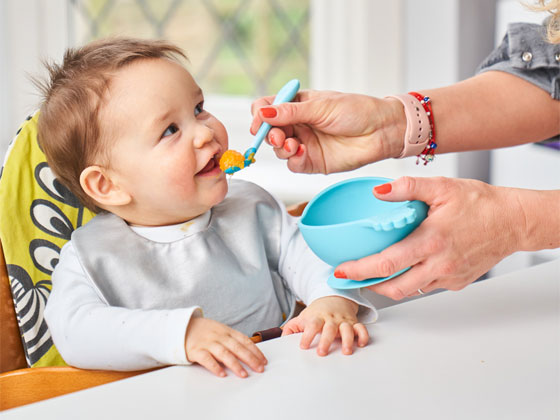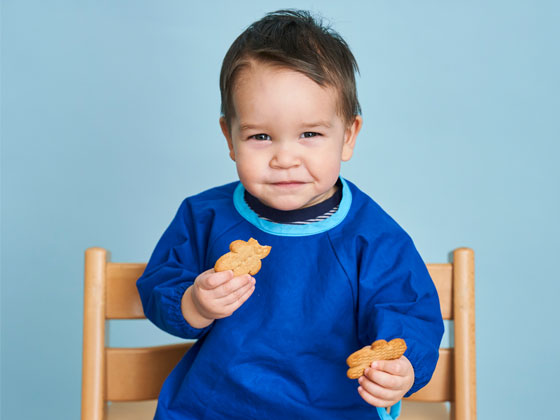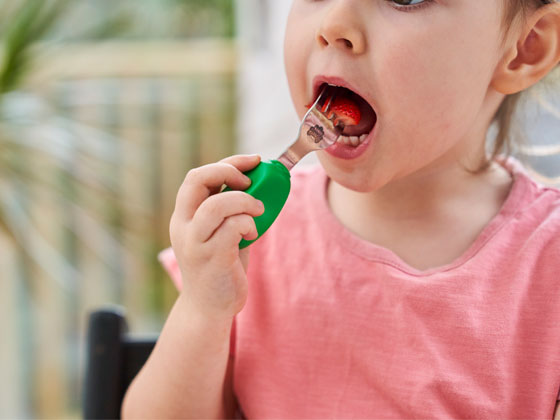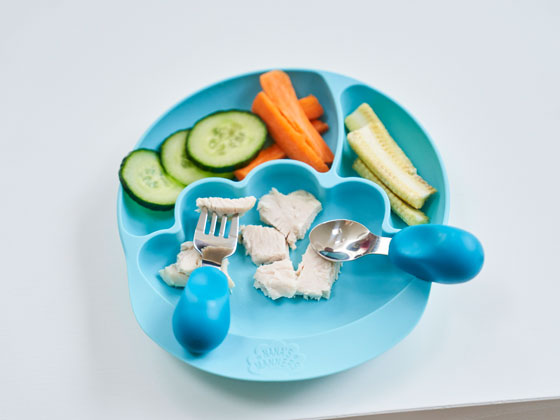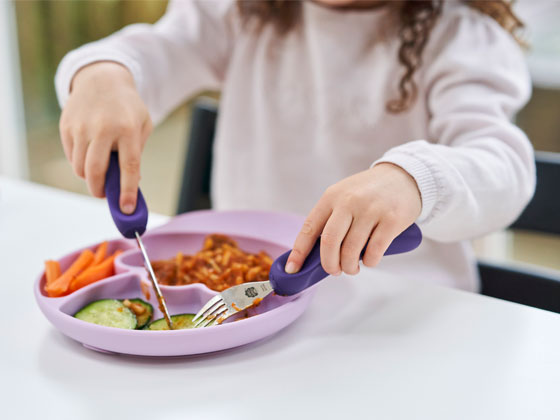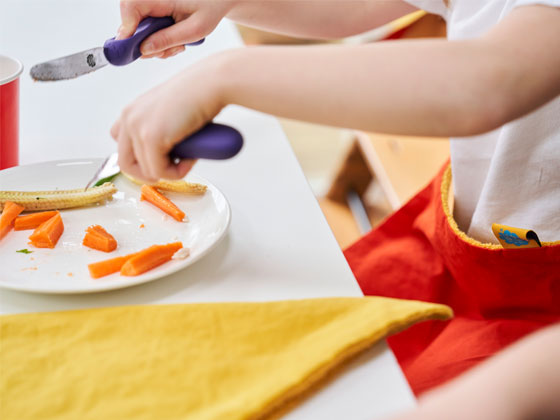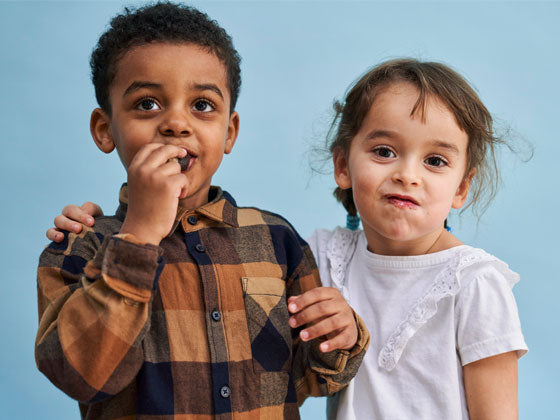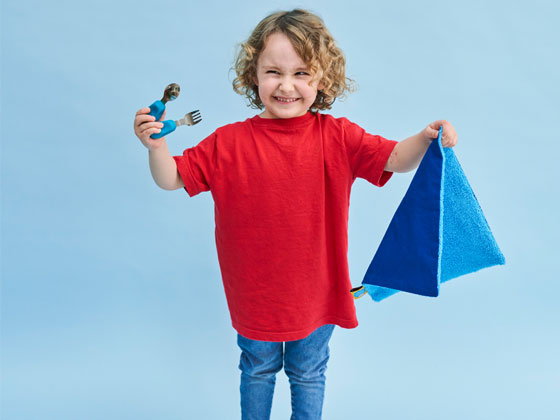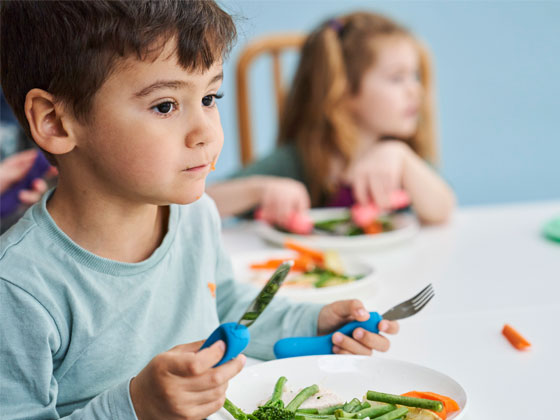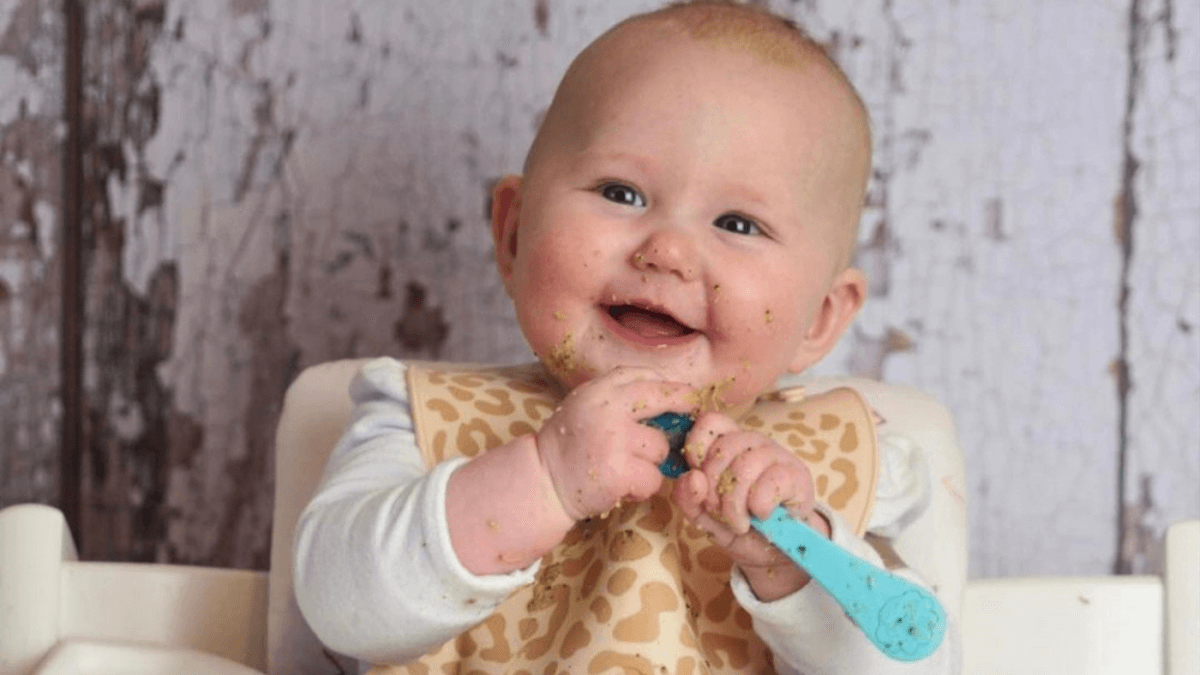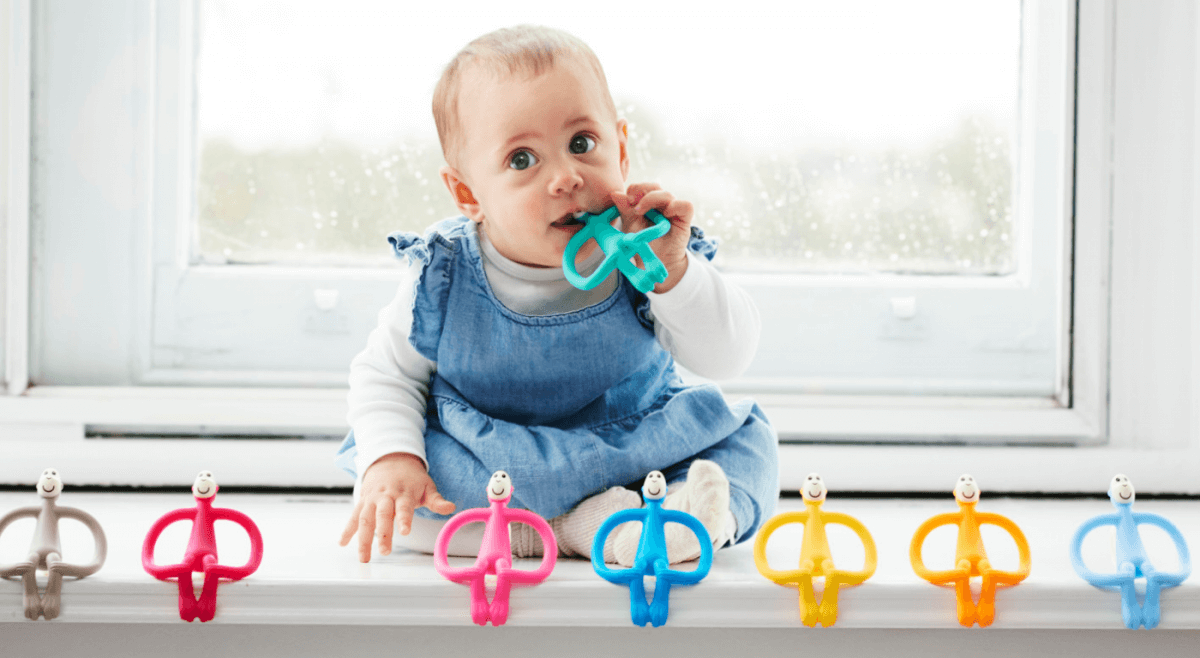
What age should I introduce children's cutlery? A knife and fork.
Introducing children's cutlery is an important step in their fine motor skill development. From around 3 years of age, children’s co-ordination between their left and right sides will allow them to begin learning to effectively use a knife and fork together. NHS guidelines suggest that between 3 and 5 years children will be learning how to spread and cut with a knife but it is often not until around 7 years of age that children can use a knife and fork completely independently to cut up and eat all by themselves.
When children start school, going into Reception at 4-5 years old, they will be expected to eat their lunch independently and use cutlery if they are eating hot meals. These are currently offered to all Key Stage 1 children by the government at no charge. Practicing beforehand will help them feel more confident during school lunchtimes.
To support your child in using their cutlery independently, it is important you first ensure they are well supported in a sitting position. Next time you cut up your meal, try taking you feet off the floor – wobbly isn’t it?! Ensure their legs are supported at a right angle with a good chair, such as Stokke, or by placing a box or the like under their legs if a supportive chair is not available.

You can break down the steps of using a knife and fork to help your child learn. First show them how to stab and hold the food with the fork, whilst you cut it using a ‘sawing’ action with the knife. Next get them to saw with the knife whilst you hold the food still with the fork. It may help to start by putting your hand over theirs to gently model the sawing movement. Then you can support them in putting both actions together.
Getting the grip right from the start is essential. ‘Pointy fingers on top’ is a great reminder, or finger stickers on their index fingers and the corresponding part of the cutlery can serve as a gentle recap as they put down their cutlery and pick it up again.

Like all of us, children love to succeed! Start by offering them meals with soft foods that are easy to cut up to increase their confidence, such as bananas, mashed potato, soft vegetables. You can still somewhat pre-cut tougher textures on their plate, like meat, so they are not having to ask for any help during the meal allowing them to feel grown up and independent. Remember, just like those first steps of weaning, this is a journey. Using cutlery takes lots of practice so make sure they have it – why not get the play dough out in between meals so they can chop up and make food for their toy friends?! Keep practicing and they will get there.
[dib_prod_9820413511]
